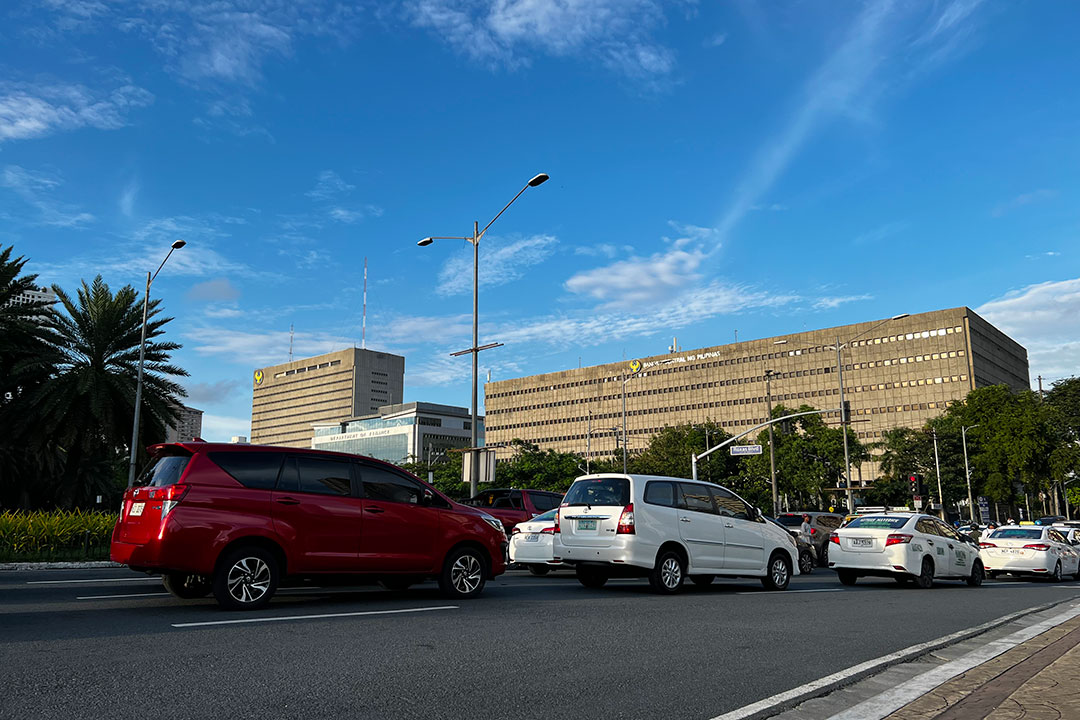




Philippines Trade Update: Trade trajectories trend along
 DOWNLOAD
DOWNLOAD

Policy Rate Updates: Double cut finale
 DOWNLOAD
DOWNLOAD

Monthly Economic Update: One for the road
 DOWNLOAD
DOWNLOAD


Yields on term deposits inch up

YIELDS on the Bangko Sentral ng Pilipinas’ (BSP) term deposits climbed on Wednesday amid hawkish expectations from monetary authorities at home and abroad.
Demand for the BSP’s term deposit facility (TDF) stood at PHP 393.161 billion on Wednesday, higher than the PHP 380-billion offer as well as the PHP 375.538 billion in tenders seen a week earlier for a PHP 400-billion offering.
Broken down, tenders for the seven-day papers amounted to PHP 236.753 billion, higher than the PHP 220 billion auctioned off by the BSP. It was also PHP 17.874 billion above the PHP 218.879 billion in tenders seen last week.
Accepted rates for the tenor ranged from 6.41% to 6.455%, narrower than the 6.4% to 6.465% band logged last week. The average rate of the one-week deposits inched up by 0.45 basis points (bp) to 6.4357% from 6.4312% previously.
Meanwhile, demand for the 16-day deposits amounted to PHP 156.408 billion, below the PHP 160 billion on the auction block and the PHP 156.659 billion in tenders seen in the previous week for a PHP 180-billion offer of 14-day deposits.
The tenor offered this week was adjusted due to holidays in the beginning of November.
Banks asked for yields from 6.4% to 6.48%, slightly wider than the 6.4% to 6.478% range seen the previous week. This caused the average rate of the paper to inch up by 0.25 bp to 6.4483% from the 6.4458% seen on Oct. 11.
The BSP has not auctioned off 28-day term deposits for three years to give way to its weekly offerings of securities with the same tenor.
The term deposits and the 28-day bills are used by the central bank to mop up excess liquidity in the financial system and to better guide market rates.
TDF yields were higher week on week due to hawkish signals from the BSP chief and the possibility of a 25-bp hike from the US Federal Reserve, Rizal Commercial Banking Corp. Chief Economist Michael L. Ricafort said in a Viber message.
The central bank is open to raising its policy rate by 25 bps during their meeting next month after inflation picked up for a second month in a row in September, BSP Governor Eli M. Remolona, Jr. said last week.
Mr. Remolona said he “would not rule out” a 25-bp increase at the Monetary Board’s Nov. 16 meeting, adding there is still room for monetary tightening as the economy remains strong.
The Monetary Board has kept the policy rate at a near 16-year high of 6.25% at its last four meetings. It raised borrowing costs by 425 bps from May 2022 to March 2023 to help bring down inflation.
Headline inflation quickened for a second straight month to 6.1% in September from 5.3% in August. This brought the nine-month inflation average to 6.6%, still higher than the BSP’s 5.8% forecast and 2-4% target for the year.
Meanwhile, the Fed kept its benchmark rate unchanged at the 5.25% to 5.5% range at its Sept. 19-20 meeting. It has hiked rates by a cumulative 525 bps since it began its tightening cycle in March last year.
The Federal Open Market Committee will hold its next policy review from Oct. 31 to Nov. 1.
Global yields have climbed amid the war between Israel and Palestine, Mr. Ricafort added.
A jump in bond yields after a barnstorming report on September US retail sales sent analysts scurrying to revise up forecasts for economic growth for both the third and fourth quarters, Reuters reported.
Markets reacted by pricing in more risk the Federal Reserve will be forced to hike again. A move in November is still seen as just an 11% chance, but January climbed to 50% from 37%.
The market also again scaled back expectations for early rate cuts, with no chance of a move until June and around 54 basis points of easing implied for all of 2024.
Bonds took it badly, with two-year yields surging as much as 14 basis points on Tuesday to a 16-year peak of 5.24%. The two-year was last at 5.2%, while 10-year yields were back near recent highs at 4.84%. — M.J.B. Poliarco with Reuters
This article originally appeared on bworldonline.com





 By BusinessWorld
By BusinessWorld